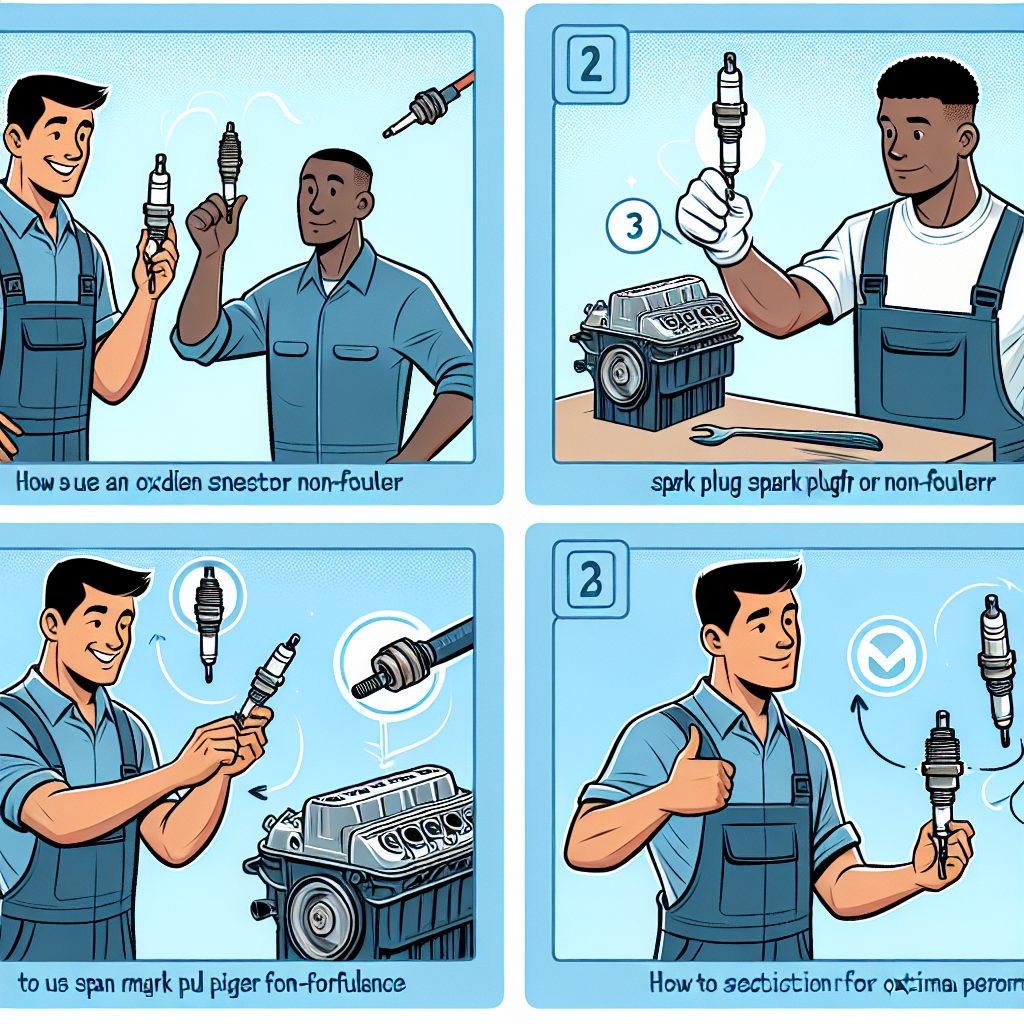
How to Use an Oxygen Sensor Spark Plug Non-Fouler for Optimal Performance
Understanding the essential components of your vehicle can greatly enhance its performance. One seemingly small vehicle component that can have a significant impact is the oxygen sensor spark plug non-fouler. If you’ve never heard of this part or are curious about how to use it for optimal performance, you’ve landed on the right article. Today, I will delve into my personal experience to provide you with practical insights on this topic.
Introduction to Oxygen Sensor Spark Plug Non-Fouler
In the world of automotive care, the oxygen sensor spark plug non-fouler isn’t something everyone is familiar with. However, for those who are, it serves as an important tool in maintaining optimal engine performance. This small device helps in preventing the spark plugs from fouling by creating an air gap that offsets the heat generated in the combustion chamber.
Why You Need an Oxygen Sensor Spark Plug Non-Fouler
Before diving into the technical aspects, it’s crucial to understand why you might need an oxygen sensor spark plug non-fouler. Over time, carbon build-up can foul spark plugs, leading to misfires and decreased vehicle performance. A non-fouler can help mitigate this issue, ensuring your vehicle runs smoothly.
Tools and Materials Needed
When working with an oxygen sensor spark plug non-fouler, a few essential tools are required:
- Oxygen Sensor Spark Plug Non-Fouler: Make sure it’s the right size for your vehicle.
- Socket Wrench Set: For easy installation and removal.
- Anti-Seize Lubricant: Helps facilitate future removals.
- Jack and Jack Stands: For easy access to the undercarriage.
- Safety Gear: Includes gloves and safety glasses.
Step-by-Step Guide on Installation
Step 1: Prepare Your Work Area
Ensure your vehicle is parked on a flat surface. Use the jack and jack stands to elevate your car for better access. Always prioritize safety by wearing gloves and safety glasses.
Step 2: Locate the Oxygen Sensor
The oxygen sensor is typically located in the exhaust manifold. Refer to your vehicle’s manual for exact locations. Having a clear idea beforehand will save you time and effort.
Step 3: Remove the Oxygen Sensor
Using your socket wrench set, carefully remove the oxygen sensor. Be mindful not to damage the sensor during this process as it is delicate.
Step 4: Attach the Non-Fouler
With the sensor removed, you can now attach the non-fouler. Insert the sensor into the non-fouler and apply anti-seize lubricant to the threads. This will help in future removals and prevent galling.
Step 5: Reinstall the Sensor
Reinstall the sensor with the non-fouler attached back into its housing. Tighten it using your wrench but avoid over-tightening as it could cause damage.
Step 6: Lower Your Vehicle
Once the sensor is securely installed, lower your vehicle carefully. Double-check everything to make sure it’s tight and secure.
Benefits of Using an Oxygen Sensor Spark Plug Non-Fouler
Improved Engine Performance
By using an oxygen sensor spark plug non-fouler, you can greatly improve the engine’s performance. It helps to reduce issues such as misfires which in turn enhances fuel efficiency.
Reduced Emissions
Another significant benefit is the reduction in harmful emissions. The non-fouler ensures efficient combustion, leading to a cleaner burn and lower emissions.
Cost-Effective Solution
This is a cost-effective solution to a common problem. Rather than frequently replacing fouled spark plugs, the non-fouler extends their life, saving you money in the long run.
Common Problems and Solutions
Issue 1: Non-Fouler Doesn’t Fit
One common problem is the non-fouler not fitting correctly. This can be resolved by ensuring you purchase a non-fouler that is compatible with your specific vehicle make and model.
Issue 2: Check Engine Light
Sometimes, after installing a non-fouler, the check engine light may still come on. This usually indicates an underlying issue that needs addressing, such as a faulty sensor or wiring.
Issue 3: Sensor Damage
Damage to the sensor during installation is another issue. This can be avoided by handling the sensor with care and using the appropriate tools.
Advanced Tips for Optimal Use
Use a Double Spark Plug Non-Fouler
For even better performance, consider using a double spark plug non-fouler. This adds an additional layer of protection against fouling.
Regular Maintenance
Regular maintenance checks are vital. Inspecting your non-fouler and oxygen sensor periodically can help identify any issues early on and ensure consistent performance.
Monitor Vehicle Performance
Keep an eye on your vehicle’s performance metrics. If you notice any decline, it might be worth rechecking the non-fouler installation or consulting a professional.
Frequently Asked Questions
Question 1: How much does an oxygen sensor spark plug non-fouler cost?
Answer: The cost varies depending on the make and model of your vehicle. However, they are generally affordable, ranging from $10 to $20.
Question 2: How often should I inspect the non-fouler?
Answer: It’s advisable to inspect the non-fouler every 10,000 to 15,000 miles to ensure it’s in good condition.
Question 3: Can I install the non-fouler myself?
Answer: Yes, with the right tools and a bit of know-how, you can install the non-fouler yourself. However, if you’re not confident, it’s always best to seek professional assistance.
Question 4: Will using a non-fouler void my vehicle warranty?
Answer: In most cases, using a non-fouler will not void your vehicle warranty. However, it’s always best to check with your vehicle manufacturer.
Conclusion
Harnessing the benefits of an oxygen sensor spark plug non-fouler can significantly improve your vehicle’s performance and longevity. By following the steps and tips shared from my first-hand experience, you can ensure that you are making the most of this small but impactful device.